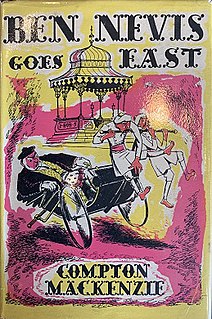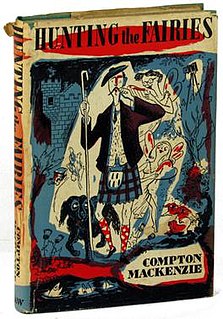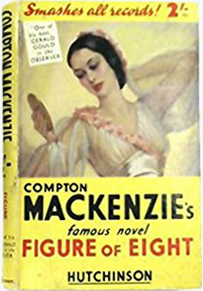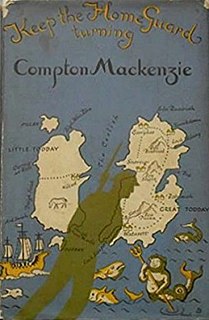
Poor Relations is a 1919 comedy novel by the British writer Compton Mackenzie. In contrast to the grimmer Sylvia and Michael published the same year, the story was a light-hearted comedy about the ups-and-downs of playwright.

The Stolen Soprano is a 1965 comedy novel by the British writer Compton Mackenzie. It was his penultimate novel, followed by Paper Lives in 1966.

Paper Lives is a 1966 comedy novel by the British writer Compton Mackenzie. A satire on the Civil Service, it is a sequel to his 1941 novel The Red Tapeworm.

The Rival Monster is a 1952 comedy novel by the British writer Compton Mackenzie. It includes characters from two earlier hit novels by Mackenzie Whisky Galore and The Monarch of the Glen.

Ben Nevis Goes East is a 1954 comedy novel by the British writer Compton Mackenzie. It features characters introduced in Mackenzie's The Monarch of the Glen. Donald MacDonald of Ben Nevis and his friend Kilwhillie head to British India in order to save his nephew from what is considered a disastrous marriage to a divorced woman.

Thin Ice is a 1956 novel by the British writer Compton Mackenzie. It tells the career of a homosexual politician seen through the eyes of his lifelong, heterosexual friend.

Mezzotint is a 1961 comedy novel by the British writer Compton Mackenzie.

The Lunatic Republic is a 1959 comedy novel by the British writer Compton Mackenzie. It parodies the ongoing Space Race.

Hunting the Fairies is a 1949 comedy novel by the British writer Compton Mackenzie. It features some of the characters who had previously appeared in The Monarch of the Glen.

Our Street is a 1931 historical novel by the British writer Compton Mackenzie.

The Vanity Girl is a 1920 novel by the British writer Compton Mackenzie.

Buttercups and Daisies is a 1931 comedy novel by the British writer Compton Mackenzie.

Figure of Eight is a 1936, novel by the British writer Compton Mackenzie.

Rogues and Vagabonds is a 1927 historical novel by the British writer Compton Mackenzie. It is set in the Victorian era.

Rich Relatives is a 1921 comedy novel by the British writer Compton Mackenzie.

Coral is a 1925 novel by the British writer Compton Mackenzie. It is a sequel to his 1912 work Carnival.

Fairy Gold is a 1926 novel by the British writer Compton Mackenzie. A Cornish knight living on an island, who has lost his son during the First World War, resents a young English soldier stationed nearby.

Vestal Fire is a 1927 comedy novel by the British writer Compton Mackenzie. It was inspired by the time Mackenzie had spent living in Capri before the First World War.

April Fools is a 1930 comedy novel by the British writer Compton Mackenzie. It is the sequel to his 1919 work Poor Relations.

Keep the Home Guard Turning is a 1943 comedy novel by the British writer Compton Mackenzie. It portrays the activities of the Home Guard on a remote Scottish island during the Second World War. The characters and setting reappeared in the more famous sequel Whisky Galore in 1947.




















